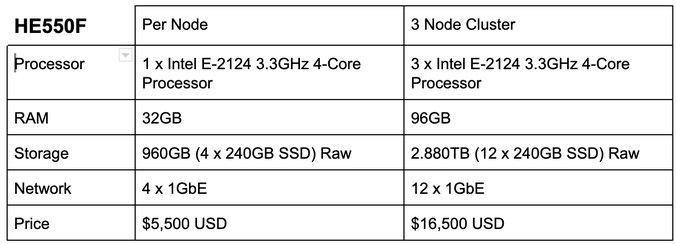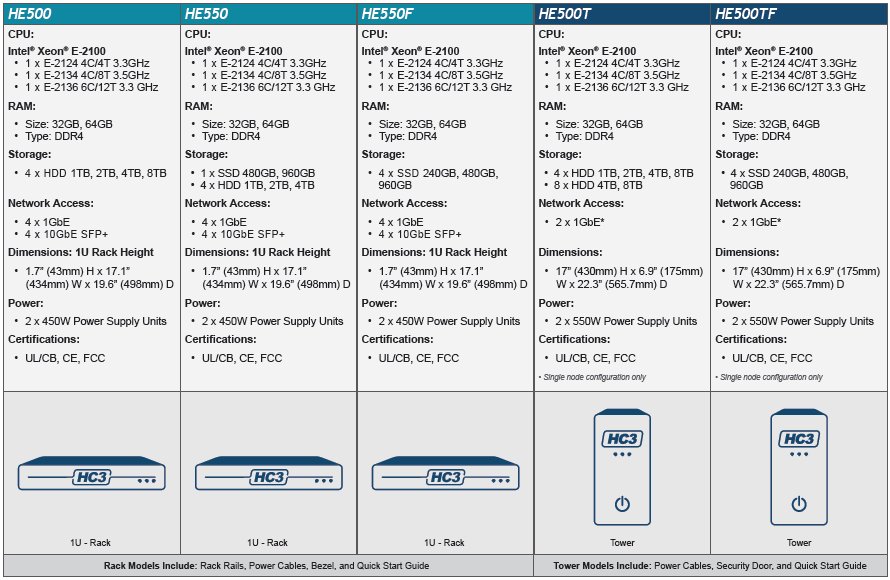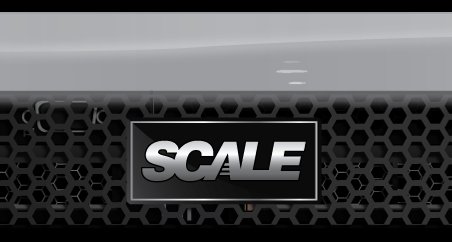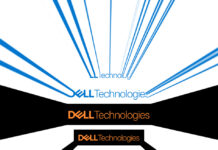Scale Computing has unveiled a line of hyperconverged systems aimed at edge computing applications where reliable and easy to deploy solutions are required.
Available now, the HE500 series is described by Scale Computing as a set of right-sized HCI appliances that provide enterprise-class features to remote locations and boost edge computing with disaster recovery support for organisations that require this capability.

Scale said the models in the HE500 series are more lightweight than its existing HC1000 and HC5000 series, and are intended as an affordable option for remote multi-site deployments across industries, including healthcare, retail and manufacturing.
Close to the edge
Edge computing covers a broad spectrum of hardware with widely differing capabilities, but Scale defines it as computing infrastructure intentionally located outside the four walls of the data centre so that storage compute resources can be placed where they are needed.
In effect, the HE500 series operates as a micro data centre that can be sited where data needs to be collected and processed, such as a workshop, with network links to the main data centre or the cloud.
Scale Computing CEO Jeff Ready said in a statement today: “An increasing number of organisations need infrastructure at the edge of the network, as this is where their data is actually being created. However, complexity and cost have been significant barriers to implementing and maintaining this technology.”
The HE500 series delivers HCI technology at a lower price point, making it viable and affordable option for more organisations, he added.
However, affordable is a relative term for HCI. A three-node cluster of HE500 systems carries a starting price of $16,500.

HyperCore
In all fairness, this includes nearly 3TB of SSD storage and three Intel Xeon server nodes each with 32GB of memory, plus Scale Computing’s HC3 HyperCore Software. This works out at 40 per cent cheaper than a 3-node cluster with hybrid storage in the HC1000 appliance series. Rival HCI platforms are often more costly.
Scale sees HyperCore as its differentiator, since it runs on bare metal with nothing additional to license or install, unlike some other HCI platforms that layer software onto an operating system.
HyperCore is based on the KVM hypervisor with additional components such as the SCRIBE software defined storage layer. SCRIBE aggregates all block storage devices in all nodes of the system into a single managed pool of storage.
Virtual machines running on HyperCore have direct block-level access to virtual disks created from the clustered storage pool without the complexity or performance overhead introduced by using remote storage protocols.
Scale said that HyperCore provides an intelligent and automated layer that results in infrastructure that is simpler to operate. It also includes features such as virtual machine replication and recovery and snapshot-based thin cloning.

The HE500 series is available in either a 1U rack-mount or in a tower configuration. Units can be configured with disk drives, all-flash storage or hybrid options, with either 32GB or 64GB RAM per node.
Customers can choose between 1Gbit/s or 10Gbit/s Ethernet ports and three different processor options, all variants of Intel’s Xeon E-2100 line.








